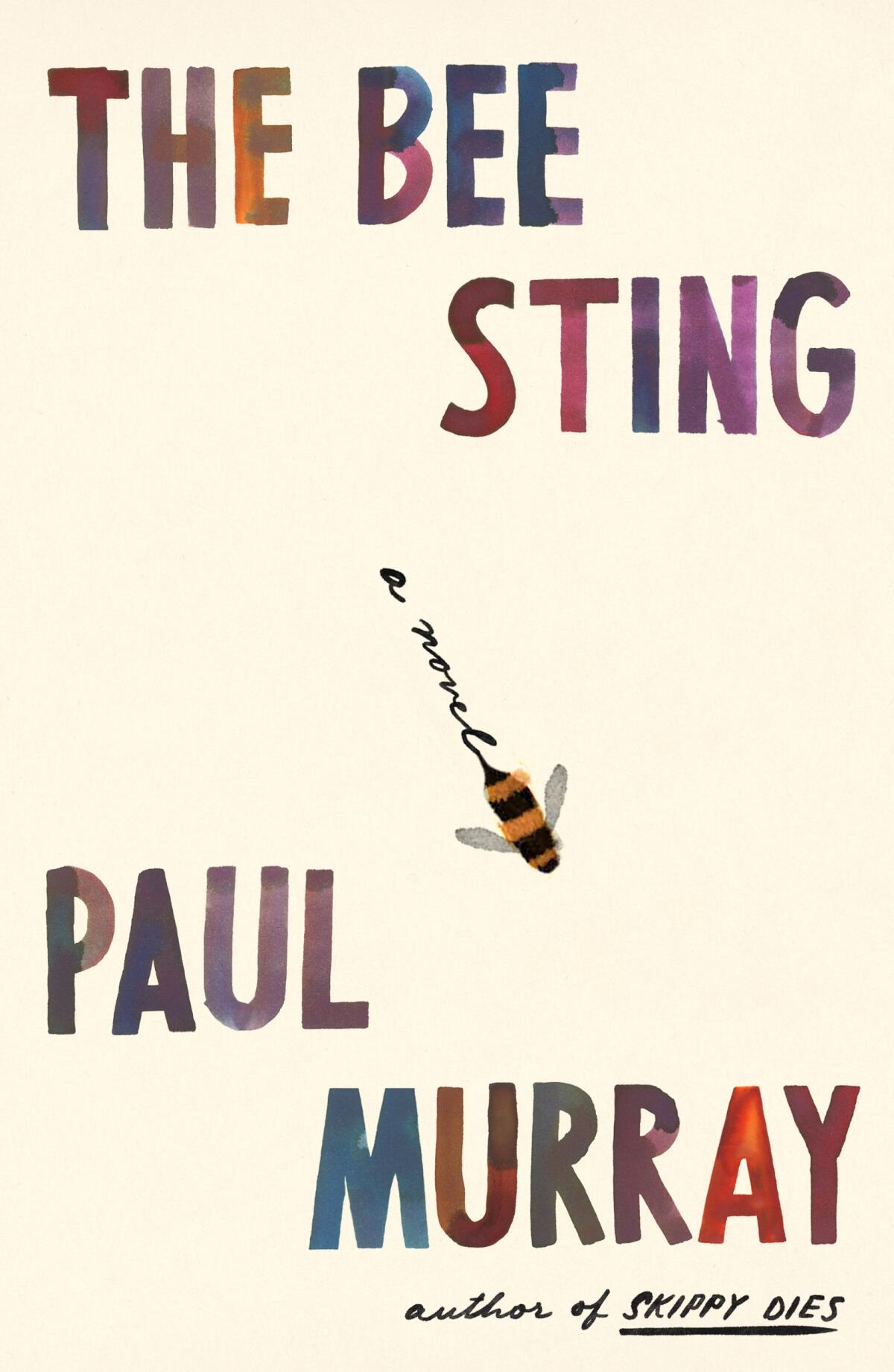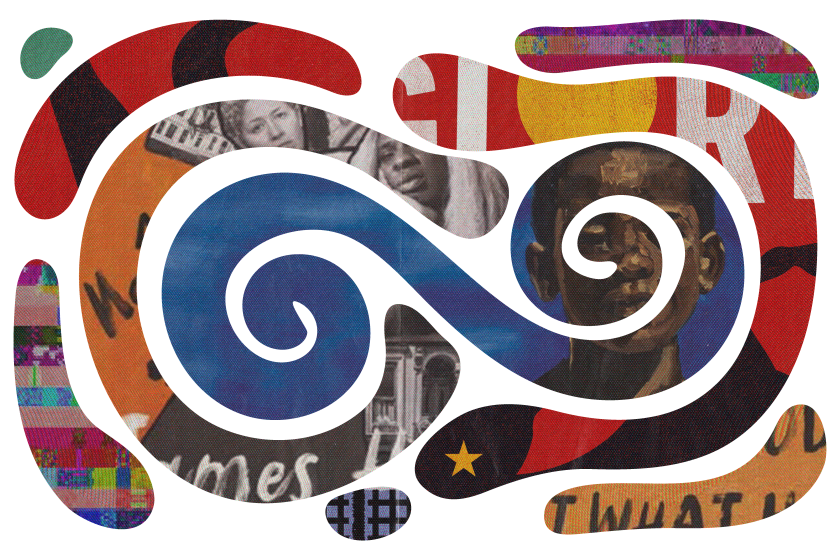The epic family novel is alive and well in the masterful hands of Paul Murray

Review
The Bee Sting
By Paul Murray
FSG: 656 pages, $30
If you buy books linked on our site, The Times may earn a commission from Bookshop.org, whose fees support independent bookstores.
Since it was published in 2010, Paul Murray’s second novel, “Skippy Dies,” has rightly earned a reputation as one of the best English-language novels of the past 20 years. A deeply vexing and comically audacious portrait of boyhood in a Catholic boarding school in Ireland, “Skippy Dies” earned numerous award nominations and end-of-year accolades. His follow-up, “The Mark and the Void,” arrived five years later, and it showed Murray working in a metafictional mode, setting his sights on the world of finance and the plight of the writer. It’s a heady and deliciously damning satire, but most significantly it demonstrated that Murray’s range is wider than we knew.
His latest novel, “The Bee Sting,” ought to cement Murray’s already high standing. Another changeup, it’s a triumph of realist fiction, a big, sprawling social novel in the vein of Jonathan Franzen’s “Freedom.” The agility with which Murray structures the narrative around the family at its heart is virtuosic and sure-footed, evidence of a writer at the height of his power deftly shifting perspectives, style and syntax to maximize emotional impact. Hilarious and sardonic, heartbreaking and beautiful — there’s just no other way to put it: “The Bee Sting” is a masterpiece.
The novel set in a Dublin high school begins with the death of a student and tracks the horrific steps that led up to it.
The Barnes family comprises Dickie, the ineffectual father, whose car dealership is on the brink of collapse; Imelda, the glamorous mother, who resents Dickie for not doing enough to save the business; Cass, the daughter, just graduated from high school and hoping to embark to Trinity College in Dublin with her best friend; and young PJ, tragically afraid of getting in anyone’s way, even if it means cramming his sprouting feet into ill-fitting shoes until they blister. Murray careens each character through their own lengthy section of the novel, giving the reader deep familiarity with their viewpoints, and concludes with a final symphony of the four alternating narratives.

The novel opens with Cass, who has one foot out of the door. She and her friend Elaine haunt a local pub and hang out with some loser dudes. Cass ends up with a “droopy boy” named Rowan who acts so apathetic around her that she finally asks “if he cared about her at all, and he shot right back, as if he’d been waiting for the question, I only care about dead rappers.” A temperamental teenager on the verge of adulthood, Cass mostly sees her family as obstacles between her and her future. Thus far, our view of the family is just a side-eyed glance.
With PJ picking up the story, the portrait of the family begins to resolve, though PJ himself doesn’t often grasp what is being revealed. His mother’s anxieties over the crumbling dealership have been taken out on the poor kid. “I’m at my wits’ end with you,” she often yells at him. Later, as PJ surveys the damage to his toes from his too-small sneakers, he berates his feet with the same phrase. It’s sad to witness an earnest child learn the language of abuse, but the tragedy deepens when the reader is taken back, in the next part, to Imelda’s childhood — and we understand where she picked up such phrases.
His new novel, ‘Crossroads,’ is extraordinary, immersive, even fun. But it makes you wonder what Franzen might accomplish if more were at stake
Throughout, Murray employs linguistic choices to distinguish the perspectives, most notably in Imelda’s section, where Murray eschews punctuation: no periods, no commas, no dashes, no semicolons — only the occasional question mark. Add to this the fact that Murray, like many Irish fiction writers, doesn’t use quotation marks in dialogue, and the result is narration that usually looks like this: “The manager came to the door and called his name I’ve got to go he said He hugged her and kissed her I’ll see you after he said There’ll be some hooley tonight when we win this thing.”
But it can also look like this: “Her heart and her hair that he loved to run his hands through her eyes he would gaze into her mouth he kissed her ears full of his words her lungs that breathed him her gowl she never let him into her guts too why not Bury it all burn it all who cared what was any of it without him.”
Reading like a cross between James Joyce’s Molly Bloom section in “Ulysses” and a frantically thumb-typed Instagram post, Imelda’s story builds up a breathless, pulsing, intensely anxious energy that suits the character perfectly. Though it may sound punishing or difficult, Murray’s prose is always comprehensible and absorbing. In fact, in the next part, when periods and commas reappeared, it took me a couple paragraphs to readjust.
It’s been a broken, chaotic year in life and in fiction. Authors such as Hernan Diaz and Namwali Serpell broke their novels and heroes into pieces.
The plot, when recounted straight, seems thin: A family deals with the fallout from uncertain financial circumstances. But this summary only reads as flimsy because Murray instead tends to each character’s arc in parallel: Imelda has to reckon with the life she chose as a grieving young girl who had just lost her high school sweetheart; PJ conspires to run away and stay with a fellow gamer he met online; Cass begins learning the truth about the family she’s finally about to leave forever; and Dickie deals with the sudden presence of his father, Maurice, who ran the garage before leaving it to Dickie and retiring to Portugal. Murray assembles these overlapping parts with complete mastery, crafting a multi-pronged, pitchfork-like structure that can penetrate the ground more effectively than a single prong.
“How can a drought cause a flood?” PJ asks his father at one point. “How can everything that happens just make something worse happen?” There is no answer to this, of course, but “The Bee Sting,” a questing and humane work of art, gets as close to one as we’re likely to get.
Clark is the author of “An Oasis of Horror in a Desert of Boredom” and the forthcoming “Skateboard.”
More to Read
Sign up for our Book Club newsletter
Get the latest news, events and more from the Los Angeles Times Book Club, and help us get L.A. reading and talking.
You may occasionally receive promotional content from the Los Angeles Times.









